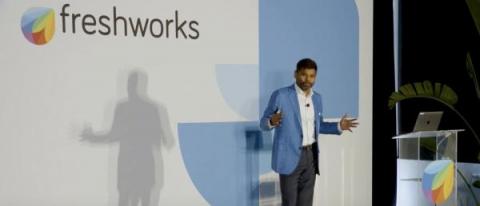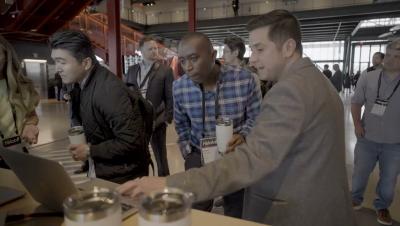Teams | Collaboration | Customer Service | Project Management
Technology
Miro now integrated with AWS AppFabric: Connect your SaaS apps and improve security
For the past few years, especially as hybrid and remote work have become normalized, enterprise organizations have become reliant on an increasing number of applications and cloud-based platforms to streamline collaboration and improve productivity among teams and individuals. Companies are incentivized to ensure their tools are accessible to everyone and that work remains frictionless, all while ensuring their data stays safe.
How AI infused immersive CX can help retailers win the battle for customer loyalty
The money in our wallets doesn’t go as far as it used to. Prices are increasing—the cost of low fat milk was around forty five per cent cheaper in December 2021 than today. Meanwhile, the phenomenon of ‘shrinkflation’, a form of hidden inflation, means we’re all paying more and getting less in return. Companies across the board, from small independent businesses right up to the biggest retailers in the country, are finding it hard too.
Shaping the future of intelligent CX with Zendesk AI
The world is changing and customer experience is shifting alongside. Advances in technology, combined with new and ongoing business challenges, put us all under pressure to continue to evolve, improve and do more for our customers. Many businesses have managed through supply chain disruptions, rising costs and the ongoing shift into the digital landscape – all while under a cloud layer of ongoing economic uncertainty. Companies are faced with tightening margins and cutting costs.
Unlocking the Magic of AI Chatbots: Delving into the Unique Worlds of GPTChat, Bard and Jasper
How AI is boosting agent intelligence - and evolving the CX team
Despite the hype, AI isn’t here to replace your human agents. On the contrary, when human agents and AI join forces, they form a powerful CX team – one that builds on their strengths, while minimising their weaknesses. Your agents shouldn’t be bogged down by busy work. With AI in their corner, they can instead focus on the tasks that make a difference. Which results in a better experience for all involved.
Unified experiences, supercharged with AI
Building software that delivers value to customers comes naturally to us at Freshworks. Sometimes, it also comes “artificially”—such as through innovations in artificial intelligence, including generative AI. Businesses around the world are already realizing the transformative potential of generative AI through automation and productivity-enhancing tools.
How tech companies are using AI to control costs in 'year of efficiency'
In response to macroeconomic pressure, technology companies of all sizes have been tightening their belts and flattening their org structures. Meta CEO Mark Zuckerberg has called it the “year of efficiency”, while others are calling it the “end of the tech boom”. But despite budget challenges, tech companies have reason to hope.
How manufacturers can cut service costs with AI and automation
It’s fair to say the manufacturing industry is on the fast track to digital transformation. The pandemic exposed the fragility of our global supply chains, resulting in empty shelves and overstocked warehouses. Meanwhile, as the pandemic subsides, inflation is driving up the cost of goods and logistics, putting the squeeze on companies still recovering from the past few years. So it’s no surprise that manufacturers are looking for ways to cut costs whilst still maintaining quality.









